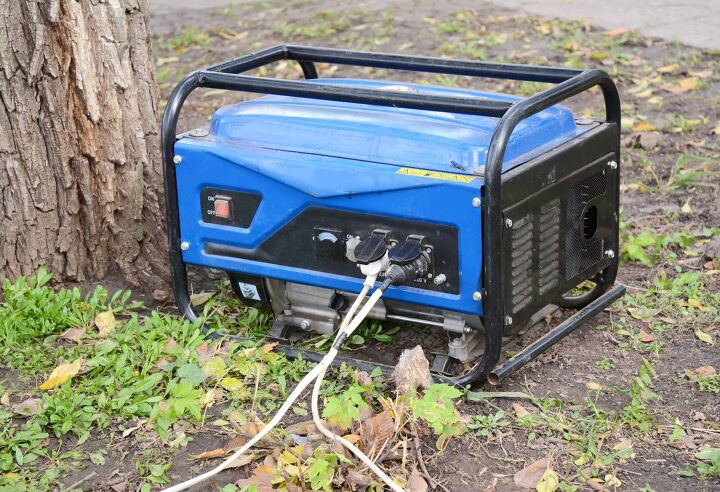How To Bypass A Low Oil Sensor On A Generator

Several appliances are built with handy safety switches and sensors. The low oil sensor on a generator prevents users from running the machine with too much oil. Doing so can permanently damage the unit.
Sometimes you’ll want to bypass the low oil sensor. Whatever your reasoning is, it is never suggested to do that. If you must, all you have to do is unplug the yellow wiring coming from the switch.
It’s essential to follow specific safety precautions that we’ll talk about below. I also share with you a more detailed way of bypassing the low oil sensor. Keep on reading to find out how to do just that.
Do You Need Generator Repair Services?
Get free, zero-commitment quotes from pro contractors near you.

Safety Precautions
When dealing with any appliance, especially ones that supply energy, it’s crucial to be as careful as possible. To reduce the risk of injury, consider reading and understanding the operator’s manual before working on the low oil sensor.
It’s also important to be aware of all of the hot parts. Allow the engine to cool completely before getting to work. This reduces the chance of any unnecessary burns.
Make sure the generator isn’t running when you’re bypassing the low oil sensor. You could potentially face injury from moving parts. Lastly, keep all cigarettes, sparks, and flames away from the generator at all times.
Bypassing a Low Oil Sensor
First things first: this is a temporary fix. After bypassing the low oil sensor, you’ll eventually want to reconnect the wires. If not, you could damage your generator, which can cost a pretty penny.
One reason folks want to do this is that the engine is filled with too much oil, and it won’t start. Another reason is to burn off what’s left before leaving the generator for a long period of time. Here’s what you can do to bypass the low oil sensor.
Step 1
Locate the yellow wire on the machine. No matter what brand you’re working with, the wire should be yellow. It’s most often found on the crankcase near the oil fill cap, beneath the panel.
Step 2
You should see a green wire connector on the yellow wire. The color of the connector can vary from one brand to another. Simply pull it apart to disconnect the wiring.
Step 3
Start your generator and allow it to run for between 15 and 30 minutes. This lets the sensor to become unstuck from the bottom of the engine. After this, be sure to reconnect the low oil sensor when you’re done.
What Causes Low Oil Pressure
If you’re experiencing low oil pressure in your generator, there are a handful of causes. When the oil pressure is low, it shows that something isn’t working as it should. Several things could be causing this, including machine failure and lubricant starvation.
The repairs needed could be rather cheap, while others can be quite costly. Check out what it could be, so that you can fix it and get your machine working properly again.
Not Using Enough Oil
While you can add the perfect amount of oil, that doesn’t mean it’s going directly to the engine. It can be burned by worn-out piston rings and even leak through seals and oil plugs. The older your generator is, the more oil it will use.
The easiest solution to this is adding more oil, but if it’s leaking, that isn’t going to solve anything. You’ll have to find out where it’s leaking from by placing a piece of cardboard under the unit. Once you know where the leak is, you can repair or replace the part before adding more oil.
To ensure that your generator is long-lasting and you get the most out of it, maintenance is key. Perform proper oil changes periodically to keep the machine happy and healthy.
Apparent Low Pressure
Are you using a diesel generator? If so, the pressure gauge gives real-time reports that make it easy for the user to see how the unit is running. Some oil manufacturers make products that have a lower viscosity that’s within range of the SAE grade.
A lower number usually means the lubricant can do more but uses less pressure. If you see on the gauge that the pressure is within a normal range, there’s nothing to worry about. It’s also important to note that some lubricants have higher pressure than others.
Engine Wear
Whenever you’re dealing with oil issues on a generator, consider how old the machine is. Check the oil level on the dipstick and see if it falls between the “add” and “full” lines. If it does, the low pressure could be blamed on worn out engine bearings.
This happens a lot when a generator has a lot of miles on it. Excessively using it can reduce the flow restriction, which drops the oil pressure. If you find yourself with this issue, it’s time to invest in a new generator.
Defective Oil Pressure Gauge
Another thing you can do when having oil issues with a generator is to check the gauge’s accuracy. If the oil pressure warning light has come on, check the oil levels. If they’re safe and there aren’t any strange noises or high temperatures, there could be a sensor issue.
Double-check to make sure that the oil sensor pressure is giving a strange reading. If everything is looking right, consider replacing the oil pressure sensor. After replacing the sensor, if the warning light stays on, replace the oil pump.
Pump Wear
Something that people can forget about is the oil pump. If the oil level on the dipstick is between the low and full marks, and the engine is running loudly, it could be the oil pump.
When the pump is worn out and old, it can’t perform how it’s supposed to. You’ll need to turn off the generator until the pump can be replaced. Once it’s fixed, it should run a lot quieter again.
Clogged Filter
Something else that could be causing oil issues on a generator is a clogged filter. If it becomes plugged up with contaminates, the bypass valve may not work properly. When this happens, it can lead to lubricant starvation.
When a generator has a clogged filter, it’s often due to overextended oil. It can be caused by other things like water and soot contamination as well. If you find that the bypass valve isn’t working how you’d like it, it’s likely due to a faulty filter.
Do You Need Generator Repair Services?
Get free, zero-commitment quotes from pro contractors near you.

Related Questions
What happens if I put too much oil in my generator?
If you happen to put too much oil in your generator, it can cause the engine to suck the oil into the cylinders. When this happens, it may smoke and end up choking the engine. If it’s a small amount, you won’t have much to worry about. When you accidentally overfill the oil by a quart or more, it has to go somewhere. Whether it’s into the vents, the cylinders, or the air housing, it should be avoided.
How does a low oil shutdown switch work?
Generators that have a low oil shutdown switch help to monitor the oil pressure within the engine. When the oil falls under a specific level, the oil switch will automatically shut off the engine. As soon as you refill the oil to a proper level, you’ll be able to use the generator as normal again.
How long can you run a generator continuously?
On average, you’ll be able to use a generator for eight to 12 hours straight. This is based on a ½ load. Depending on the type of generator you own, you’ll be able to run it for longer.

Kirstin is a passionate writer who loves helping people learn new things when it comes to home improvement. When she's not behind a keyboard, she enjoys DIY projects, crafts, spending time with her pets, and making videos. She hopes that with all she writes, someone is finding a solution to their home improvement needs.
More by Kirstin Harrington










![10 Best Electric Pressure Washers – [2022 Reviews & Guide]](https://cdn-fastly.upgradedhome.com/media/2023/07/31/9070600/10-best-electric-pressure-washers-2022-reviews-guide.jpg?size=350x220)
















